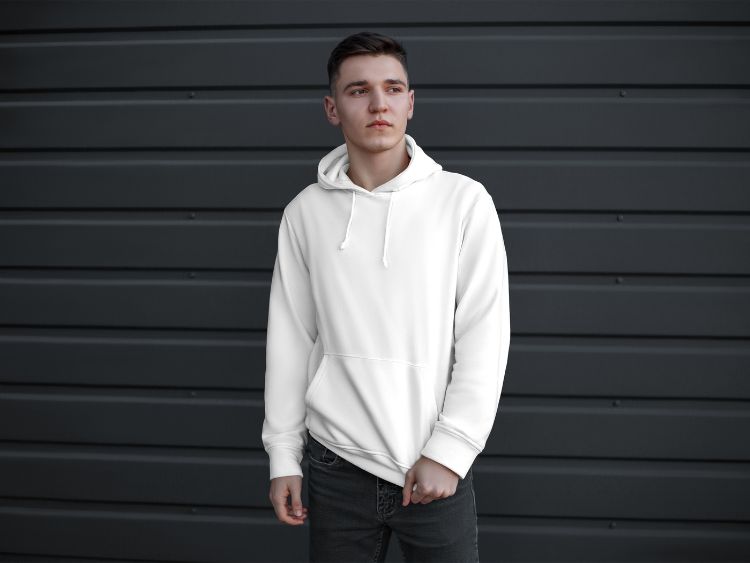The Decade of Style
The 1950s is often remembered as a golden age of fashion. After the austerity of the 1940s, the post-war era welcomed a return to femininity, glamour, and sophistication. 1950s fashion was all about striking silhouettes, structured outfits, and polished looks that still resonate with fashion enthusiasts today. In fact, the trends from this decade continue to influence modern-day designers and street styles alike. So, what made the fashion of the 1950s so iconic?
A New Definition of Femininity
One of the most notable shifts in 1950s fashion was the emphasis on the hourglass figure. Women’s clothing was tailored to enhance curves, with cinched waists, full skirts, and padded bustlines taking center stage. Dresses with voluminous skirts, made famous by designers like Christian Dior, dominated the scene. Dior’s “New Look” from 1947 set the tone for the decade, and it was all about elegance and grace. No more boxy wartime silhouettes—this was a time for flair and extravagance.
The Hourglass Silhouette
- Cinch those waists: Women wore tight-fitting bodices that emphasized a small waistline.
- Full skirts: Skirts were designed with layers of petticoats to create dramatic volume.
- Structured garments: Garments were structured with seams and darts to hug the torso perfectly.
This shape wasn’t just limited to dresses. Even blouses and skirts followed the same guiding principle. Pencil skirts also became a wardrobe staple, emphasizing a woman’s curves while providing a sleek, sophisticated look.
Casual Trends: Not Just for Glamorous Evenings
While evening wear reflected sophistication and grace, casual daywear saw the rise of simpler, more practical pieces. Women embraced 1950s fashion staples like the shirtwaist dress and capri pants. This was the first time women could step out in pants without it being a statement of rebellion.
- Shirtwaist Dresses: These dresses were a mix of style and convenience, often featuring button-down fronts and belted waists. Perfect for the homemaker or for a casual day out.
- Capri Pants: Iconic and practical, capris became a popular choice for women looking for a comfortable, chic alternative to skirts.
- Pedal Pushers: Cropped pants that reached just below the knee made waves, particularly among younger women.
These trends weren’t only for women—men in the 1950s also enjoyed more relaxed fashion. From slacks and cardigans to the rise of the “greaser” look, men’s styles reflected post-war prosperity and a more laid-back lifestyle.
Accessories: The Perfect Finishing Touch
In the 1950s, no outfit was complete without the right accessories. From gloves to hats, accessories were an essential part of any outfit and added a polished, put-together feel. Even casual outfits had an air of sophistication thanks to the carefully selected extras.
Iconic Accessories
- Gloves: Women rarely left the house without a pair of gloves, especially for formal occasions. They added a sense of refinement.
- Hats: Fascinators, pillbox hats, and wide-brimmed styles were commonly worn, especially with dressier outfits.
- Pearls: Pearls were the ultimate status symbol, often worn as necklaces, earrings, and bracelets.
These accessories weren’t just for fashion—they were a reflection of the conservative, polished image many people aspired to maintain.
Popular Fabrics and Patterns
The materials of the 1950s were luxurious and full of texture. Silk, taffeta, and chiffon were often used in evening wear, while cotton and wool were more common for day-to-day attire. And let’s not forget about the rise of synthetic fabrics like polyester, which made fashion more affordable for the average woman.
Favorite Patterns of the Decade
- Polka dots: Playful and feminine, this pattern could be found on everything from dresses to scarves.
- Plaid: Especially popular in men’s fashion, plaid was used in everything from shirts to suits.
- Florals: A nod to femininity, floral prints were popular in women’s dresses and skirts.
Fashion Icons of the 1950s
No article about 1950s fashion would be complete without mentioning the style icons that defined the era. Stars of the silver screen heavily influenced the trends of the time, with women emulating their favorite actresses and men looking to leading men for style inspiration.
The Women Who Defined the Era
- Marilyn Monroe: Perhaps the most iconic figure of the decade, Marilyn’s hourglass shape and blonde curls became synonymous with glamour.
- Audrey Hepburn: With her pixie-like elegance and classic style, Audrey introduced a more refined, timeless approach to fashion.
- Grace Kelly: Known for her sophisticated looks, Grace embodied the essence of 1950s elegance with her polished outfits and understated accessories.
The Men Who Set the Trends
- James Dean: The quintessential rebel, Dean’s leather jacket and jeans combo gave birth to the greaser look.
- Elvis Presley: With his bold style choices, from loud prints to sleek suits, Elvis influenced men’s fashion across the board.
- Cary Grant: For the more sophisticated man, Cary Grant’s dapper suits and clean lines were the epitome of 1950s men’s fashion.
The Influence of Post-War Culture
The socio-economic landscape of the 1950s had a huge impact on the fashion world. Post-war prosperity allowed people to indulge in luxury goods again, and this was reflected in the clothing. Fashion houses flourished, with haute couture growing in prominence. People wanted to dress in a way that reflected their newfound optimism.
Fashion also became more accessible during this time. Department stores carried ready-to-wear collections inspired by high-end designers, allowing women to recreate runway looks at home.
1950s Fashion FAQs
What is the most iconic fashion trend from the 1950s?
The hourglass silhouette defined 1950s fashion, thanks to designers like Dior who popularized full skirts and cinched waists.
How did men dress in the 1950s?
Men often wore suits for formal occasions, but casual fashion saw the rise of more relaxed items like cardigans, slacks, and the rebellious leather jackets of the greaser subculture.
Why are 1950s dresses still popular today?
Many people love 1950s fashion because of the flattering silhouettes, timeless designs, and feminine charm that dresses from that era offer. They are still worn for formal events and retro-themed parties.
What role did Hollywood play in 1950s fashion?
Hollywood stars like Marilyn Monroe, Grace Kelly, and James Dean heavily influenced the fashion trends of the decade, with fans eager to emulate their favorite celebrities’ style.
Conclusion: The Enduring Legacy of 1950s Fashion
The fashion of the 1950s left an indelible mark on the world, influencing the trends we see today. Whether it’s the timeless elegance of Audrey Hepburn or the bold rebellion of James Dean, the iconic styles of this era continue to inspire designers and fashion lovers alike. The tailored cuts, luxurious fabrics, and attention to detail in 1950s fashion reflect a time when dressing up was an art form. Today, these looks evoke a sense of nostalgia and remain a testament to the beauty and sophistication of the past.
Authoritative Links:
- www.historyoffashion.com/1950s-fashion
- www.vintagefashionguild.org/1950s
- www.fashionencyclopedia.com/fashion_1950s



